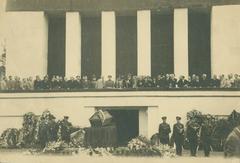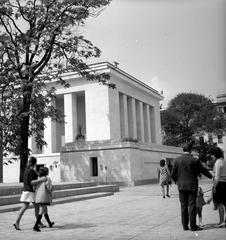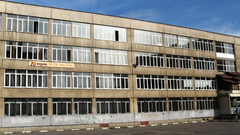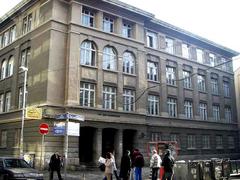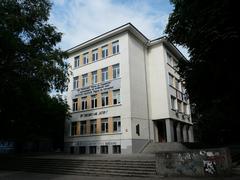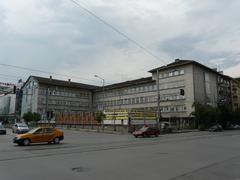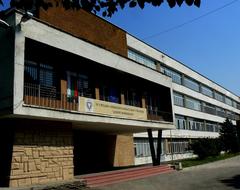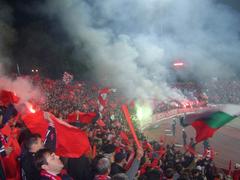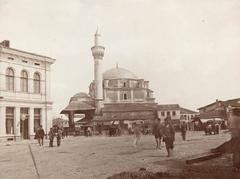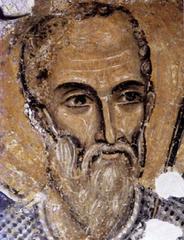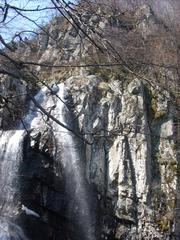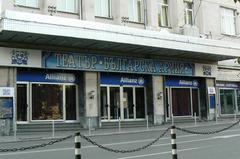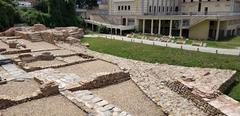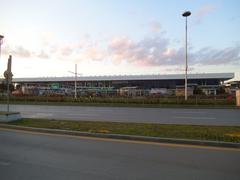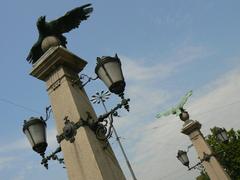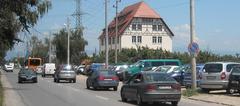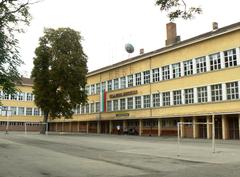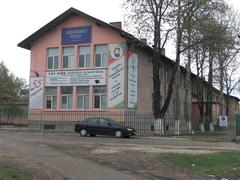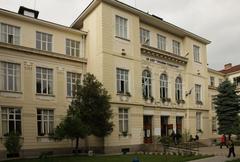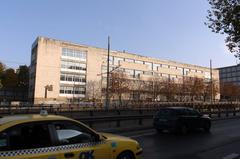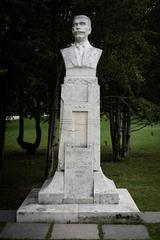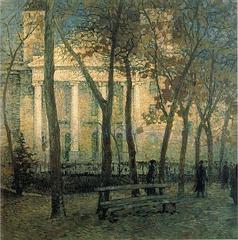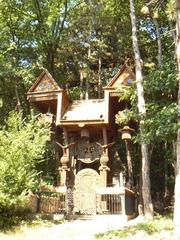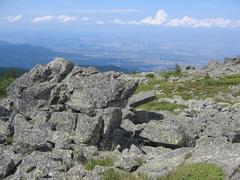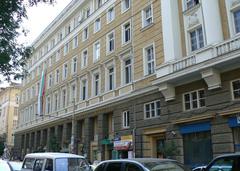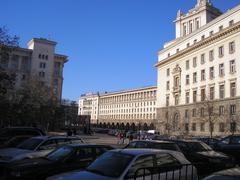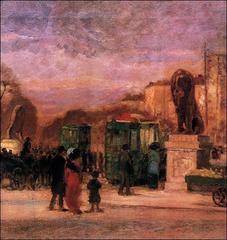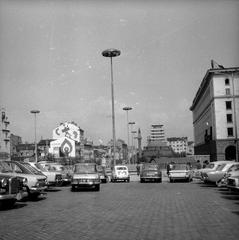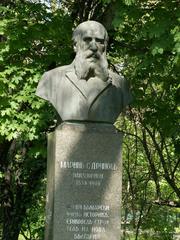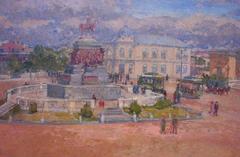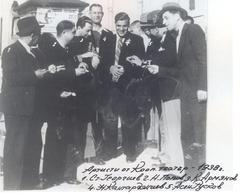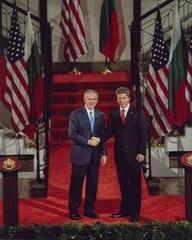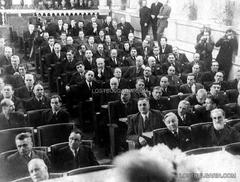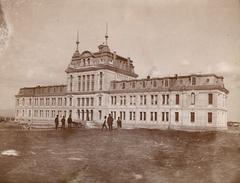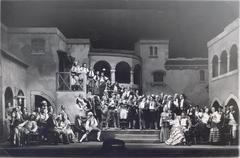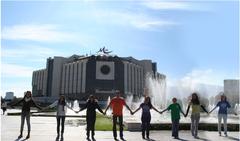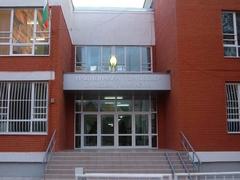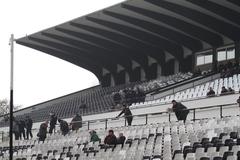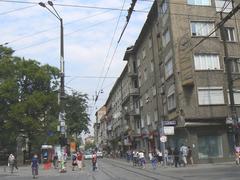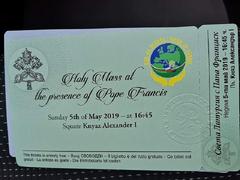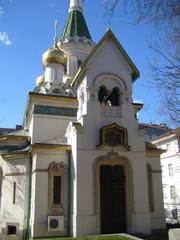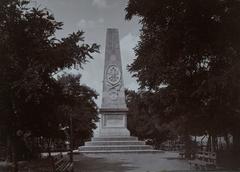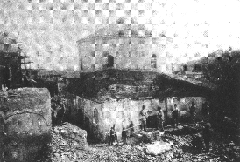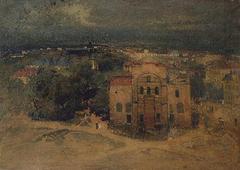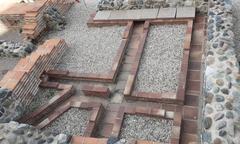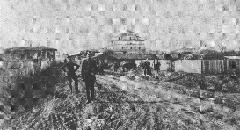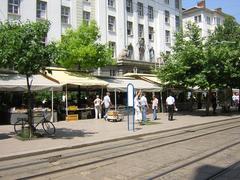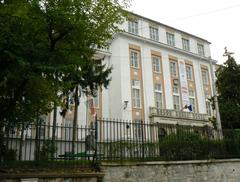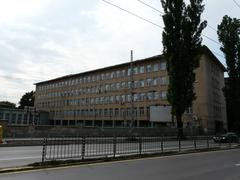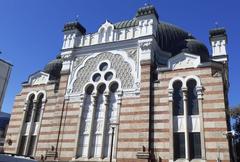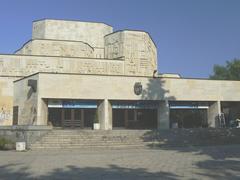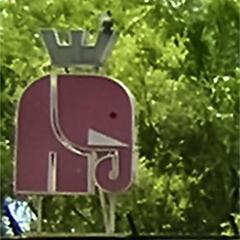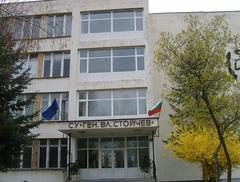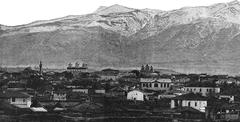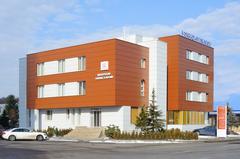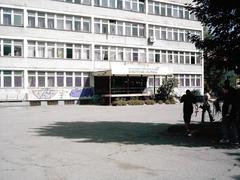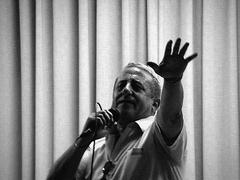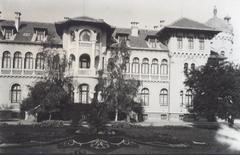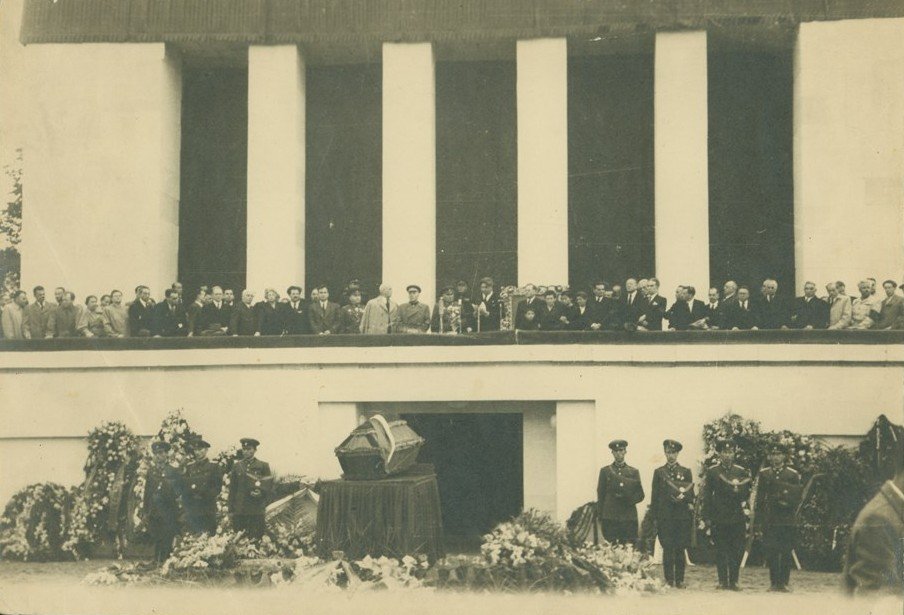
Georgi Dimitrov Mausoleum: Visiting Hours, Tickets, and Sofia Historical Sites Guide
Date: 15/06/2025
Introduction to the Georgi Dimitrov Mausoleum in Sofia
The Georgi Dimitrov Mausoleum stood as a monumental emblem of Bulgaria’s communist era, reflecting the nation’s political transformations and architectural vision. Constructed in July 1949—astonishingly, in just six days—after the death of Georgi Dimitrov, Bulgaria’s first communist leader, the mausoleum was both a site of remembrance and a stage for state ceremonies (Wikipedia; Nonument). Its neoclassical, Soviet-inspired architecture deliberately contrasted Sofia’s historical cityscape, asserting the dominance of the new regime (Tony Wheeler; New East Archive).
For over four decades, the mausoleum was a focal point for socialist rituals and compulsory pilgrimages. The fall of communism in 1989 precipitated public debates about its fate, culminating in the removal of Dimitrov’s remains in 1990 and the building’s demolition in 1999 (Europe Between East and West; Sofia Municipality). Today, Prince Alexander of Battenberg Square is an open public space where the mausoleum once stood—a place for reflection on Bulgaria’s layered history.
This guide explores the history, architecture, and political significance of the Georgi Dimitrov Mausoleum, while providing practical information for visitors interested in Sofia’s historical sites.
Table of Contents
- Introduction
- History of the Georgi Dimitrov Mausoleum
- Construction and Architectural Features
- The Mausoleum’s Role During Communism and After
- Debates and Demolition
- Visiting Today: Prince Alexander of Battenberg Square
- Nearby Attractions and Tours
- Cultural and Historical Significance
- Frequently Asked Questions (FAQ)
- Visuals and Resources
- Conclusion
- References and Further Reading
History of the Georgi Dimitrov Mausoleum
The mausoleum was constructed almost immediately after Dimitrov’s death in July 1949. Its primary purpose was to house the embalmed body of Bulgaria’s communist leader, thereby cementing his legacy and providing a new ideological center for the country (Wikipedia). The site became the setting for state rituals, official parades, and the reinforcement of socialist ideals.
During the communist era, visiting the mausoleum was a rite of passage for school groups and foreign dignitaries alike. However, with the dissolution of the communist regime in 1989, the mausoleum lost its original significance. Dimitrov’s remains were removed in 1990, and the building lingered as a controversial relic until its demolition in 1999.
Construction and Architectural Features
Rapid Construction
The mausoleum was built in just six days by mobilizing hundreds of workers and diverting resources from other projects (Nonument; Travelsignposts). This urgency highlighted the regime’s determination to establish a new symbol in the heart of Sofia.
Architectural Style
Architect Georgi Ovcharov designed the mausoleum in a stark, neoclassical style, utilizing white marble and minimal ornamentation. The structure’s monumental presence was meant to exude solemnity and power, taking inspiration from the Lenin Mausoleum in Moscow (New East Archive). Its prominent location directly across from the old Royal Palace symbolized the triumph of communism over monarchy (Tony Wheeler).
Notable Features and Modifications
- Underground Facilities: The building contained technical rooms and climate control systems to preserve the body (Nonument).
- 1970s Renovation: In 1974–75, the mausoleum’s underground infrastructure was expanded and a crystal sarcophagus as well as mosaics by artist Dechko Uzunov were added (Wikipedia).
- Structural Strength: The mausoleum was built to be exceptionally robust, with some reports suggesting it could withstand a nuclear blast (Travelsignposts).
The Mausoleum’s Role During Communism and After
For decades, the mausoleum was a compulsory site for socialist rituals, reinforcing the legitimacy of the Bulgarian Communist Party. After 1989, the building’s status became ambiguous. With Dimitrov’s body removed, the mausoleum was occasionally used for concerts and events, but mostly stood as a symbol of a contested past (Europe Between East and West).
Debates and Demolition
The fate of the mausoleum was hotly debated in the 1990s. Some advocated its preservation as a museum, while others pushed for its demolition as a rejection of totalitarianism. In 1999, the government ordered its demolition, which proved to be a technical challenge due to the building’s reinforced structure (New East Archive). Several attempts with explosives failed before the mausoleum was finally dismantled.
Visiting Today: Prince Alexander of Battenberg Square
Current Status
No physical traces of the mausoleum remain above ground. The site has been transformed into a lively urban space without any markers commemorating the mausoleum’s location. However, its memory persists in the collective consciousness of the city.
Visitor Information
- Location: Prince Alexander of Battenberg Square, central Sofia
- Access: Open to the public 24/7; no tickets or entry restrictions
- Accessibility: The square is fully accessible and well-connected by public transport
- What to See: While the mausoleum is gone, visitors can reflect at the site and explore nearby attractions
Nearby Attractions and Tours
Combine your visit to the former mausoleum site with these historic landmarks:
- Alexander Nevsky Cathedral: Bulgaria’s most iconic Orthodox cathedral, just a short walk away
- National Art Gallery: Located in the former Royal Palace, offering exhibitions on Bulgarian art and history
- Ivan Vazov National Theatre: Bulgaria’s premier theatre, situated near the square
Several walking tours of Sofia include the mausoleum site as part of the narrative on Bulgaria’s 20th-century history (Visit Sofia Official Tourism Site).
Cultural and Historical Significance
The Georgi Dimitrov Mausoleum was a potent symbol of communist ideology and state power. Its neoclassical design, strategic location, and ceremonial function all contributed to its role in shaping Bulgaria’s urban and political identity. Its demolition, meanwhile, epitomized the country’s efforts to reckon with—and move beyond—its totalitarian past (Europe Between East and West; Balkan Insight).
Frequently Asked Questions (FAQ)
Q: Can I visit the Georgi Dimitrov Mausoleum today?
A: No, the mausoleum was demolished in 1999. The site is now an open public square.
Q: Are there any remnants or memorials at the site?
A: There are no visible remnants or official memorials marking the mausoleum’s location.
Q: Are there guided tours about the mausoleum?
A: Many guided tours of Sofia include the mausoleum site as part of their exploration of the city’s communist history.
Q: What are other must-see historical sites nearby?
A: Alexander Nevsky Cathedral, National Art Gallery, and Ivan Vazov National Theatre.
Q: Is the site accessible for people with disabilities?
A: Yes, Prince Alexander of Battenberg Square is wheelchair accessible.
Visuals and Resources
- Images: Historical photographs of the Georgi Dimitrov Mausoleum (Nonument), and current photos of Prince Alexander of Battenberg Square.
- Map: Interactive map showing the square’s location and nearby attractions.
- Virtual Tours: Some online resources and city tours provide virtual reconstructions or photographic histories of the mausoleum.
Conclusion
The Georgi Dimitrov Mausoleum remains a powerful chapter in Sofia’s story—a testament to political ambition, architectural endeavor, and the complexities of national memory. Although the mausoleum no longer dominates the city’s skyline, its legacy invites both reflection and exploration. When visiting Sofia, include Prince Alexander of Battenberg Square in your itinerary for a deeper understanding of Bulgaria’s evolving identity. Enhance your visit with a guided tour or a stop at the Museum of Socialist Art for further context on the country’s 20th-century history (Museum of Socialist Art).
For updated travel tips, virtual tours, and more on Sofia’s historical sites, download the Audiala app and follow our cultural content channels.
References and Further Reading
- Wikipedia: Georgi Dimitrov Mausoleum
- Nonument: The Mausoleum of Georgi Dimitrov
- New East Archive: Georgi Dimitrov Mausoleum
- Tony Wheeler: Bulgaria Sofia Plovdiv
- Europe Between East and West: The Unvisited Georgi Dimitrov’s Missing Mausoleum in Sofia
- Sofia Municipality
- Visit Sofia Official Tourism Site
- Museum of Socialist Art
- Novinite: Bulgaria Communist Leader Mausoleum
- Academia.edu: Recharging Socialism - Bulgarian Socialist Monuments
